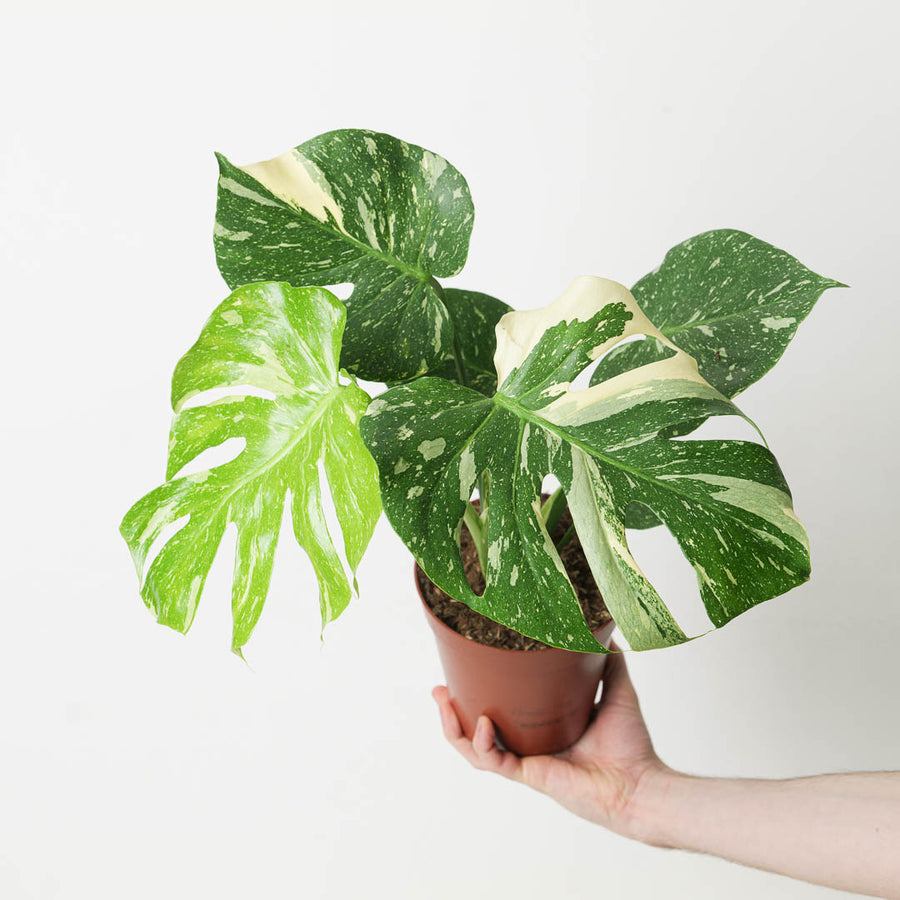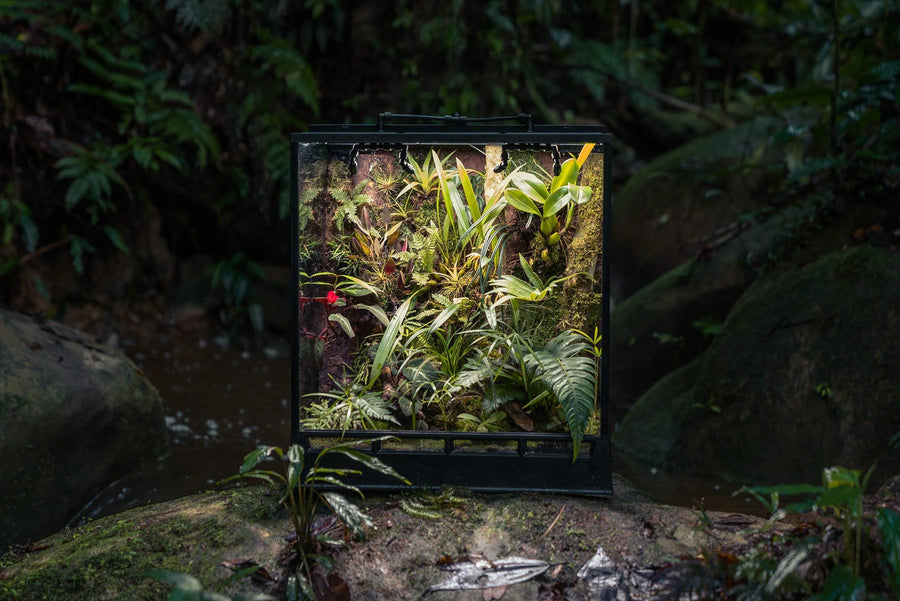Dracula lotax is a captivating species of orchid in the Dracula genus, renowned for its unusual, bat-like flowers and compact growth habit. This plant produces small, tubular flowers with elongated sepals that taper into thin, thread-like tails. The sepals are typically a creamy white to pale pink colour, adorned with darker spots or lines, while the lip (labellum) resembles a miniature mushroom or face, enhancing its quirky appearance. The flowers, which bloom near the base of the plant, emit a mild fragrance and usually appear in clusters during the growing season, adding an exotic touch to indoor orchid collections. Dracula lotax’s compact growth makes it well-suited to small spaces or terrariums where its unique blooms can be appreciated up close.
Dracula lotax requires more specialised care than some orchids, particularly in terms of humidity and airflow. However, with controlled conditions, it can thrive indoors and reward with its distinctive flowers. It’s a rewarding plant for hobbyists with some experience growing high-humidity plants.
Native to
Dracula lotax is native to the cloud forests of Central and South America, particularly found in Ecuador and Colombia, where it grows in cool, humid environments at elevations between 1,500 and 2,000 metres. In its natural habitat, it is typically found growing epiphytically on mossy tree branches, receiving dappled light under the forest canopy.
Water
This orchid thrives in consistently moist conditions. Water Dracula lotax regularly to keep the growing medium from drying out, ideally using distilled or rainwater. Avoid letting the plant sit in standing water, as good drainage is essential to prevent root rot. Frequent misting can help maintain moisture levels, especially when grown in a mount.
Light
Dracula lotax prefers low to medium, indirect light. It does best in shaded areas, similar to its native forest understorey conditions. Direct sunlight should be avoided, as it can scorch the delicate leaves and flowers. A north-facing window or filtered light is ideal for this orchid.
Humidity
High humidity is essential for Dracula lotax, ideally between 70% and 80%. This makes it well-suited for growth in a terrarium or under a humidity dome. Uusing a humidifier can help maintain adequate humidity levels, especially in drier indoor environments.
Temperature
Dracula lotax prefers cooler temperatures, with a daytime range of 15°C to 22°C and night-time temperatures around 10°C to 15°C. It’s sensitive to excessive warmth and requires good airflow to prevent fungal issues, especially at higher humidity levels. Avoid placing it near heat sources or direct air currents, as stable, cool temperatures are key to its success indoors.









